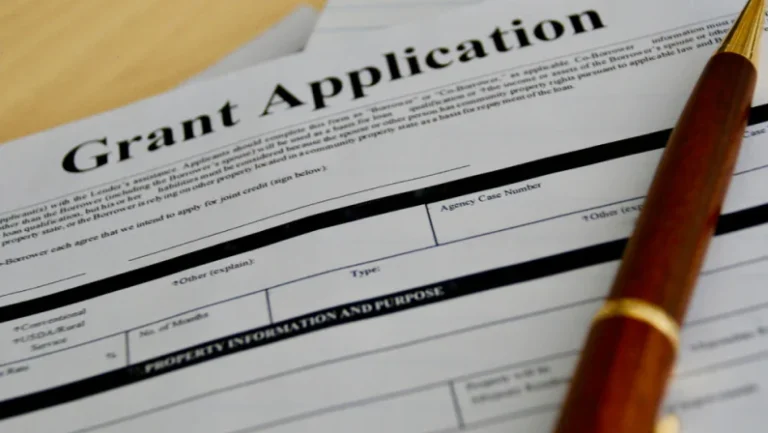Managing Requests for Proposals (RFPs) can be a complex, time-sensitive task, especially for growing organizations. Each RFP presents an opportunity to win new business. But without a solid system, that opportunity can quickly turn into a drain on time and resources.
Efficient RFP management is about creating a repeatable, strategic process that allows teams to respond faster, more effectively, and with higher-quality proposals. Let’s take a closer look at what that entails.
What Is RFP Management and Why Is It Important?
RFP management is the end-to-end process of reviewing, organizing, and responding to a formal request for proposals from a client or organization. It involves everything from assessing the opportunity to submitting the final response.
Strong RFP management helps reduce missed deadlines, confusion, and rushed proposals. It allows your team to approach each RFP with confidence, ensuring that the proposal is not only compliant but also persuasive and tailored to the client’s needs.
For industries like RFP asset management, RFP property management, or RFP event management, where RFPs are common, a structured approach can make or break your growth strategy.

What Are the Key Stages of the RFP Lifecycle?
Every RFP follows a general path from initial review to final submission. The lifecycle starts with a careful opportunity assessment. This stage helps you decide if the RFP aligns with your capabilities and strategic goals. Once you decide to move forward, planning begins. This involves setting deadlines, identifying responsible team members, and organizing resources.
The next stage is content development. Here, subject matter experts, writers, and designers come together to craft a response that addresses the client’s requirements. Once the first draft is complete, the proposal undergoes review and revisions. This quality assurance stage ensures that the final version meets internal and client standards. Submission marks the close of the process, but reviewing feedback and results is essential for continuous improvement.
How Can You Quickly Determine If an RFP Is Worth Pursuing?
One of the most important decisions in RFP project management is knowing when to say no. Not every RFP is a good fit. Start by evaluating whether the scope aligns with your services. If your team lacks key capabilities requested in the RFP, or if the requirements don’t reflect your strengths, it may not be worth pursuing.
Next, consider the internal bandwidth. Even a promising opportunity can become a liability if your team is overextended. Also, think about how competitive the opportunity is and how your pricing compares to likely competitors. Reviewing past performance in similar bids can also give you insight into how strong your position might be. All of these factors help you avoid spending time on low-value pursuits.
What Strategies Help Streamline RFP Response Development?
The key to streamlining the RFP response process is repeatability. Instead of starting from scratch each time, build a system that makes your process faster and more reliable. This starts with having a clear RFP response management workflow that outlines who is responsible for what and when.
Creating and maintaining a library of frequently used content, like company bios, case studies, or service descriptions, saves time and ensures consistency. Using collaboration tools that support live editing and comments can prevent version confusion and speed up internal review. Perhaps most importantly, setting internal deadlines ahead of the final due date gives your team room to revise and refine without the last-minute rush.
How Should Teams Be Organized for Effective RFP Collaboration?
A successful RFP team needs a clear structure. The role of the RFP manager is central. This person keeps the timeline moving, gathers input from subject matter experts, and ensures that the proposal stays on track and on message. Subject matter experts, on the other hand, provide technical input or service-specific details that must be accurate and compelling.
Writers and editors are responsible for turning raw input into clear, persuasive content. They ensure the tone is professional, the structure is easy to follow, and the response is tailored to the client. Reviewers—often from senior leadership or legal—look over the final draft to ensure it meets all requirements and represents the company well. Having clear roles avoids overlap and confusion, making the process smoother for everyone.
What Tools and Software Can Improve RFP Management?
Technology can transform how you manage RFPs. A good RFP system centralizes communication, tracks progress, and houses reusable content. RFP-specific platforms like Loopio or Responsive are designed to help teams manage complex responses, while general project management tools like Asana or Monday.com keep timelines and tasks visible to everyone.
Customer relationship management (CRM) platforms can be linked to RFP tools to pull in relevant client information and streamline data entry. Document sharing platforms like Google Drive or SharePoint ensure everyone works from the same file. Together, these tools reduce delays and make it easier to manage multiple responses simultaneously.
How Do You Ensure Consistency and Quality in RFP Responses?
Consistency requires standards. Start with a clear content style guide. This outlines tone, formatting, terminology, and preferred phrasing so that every proposal feels unified, even when written by multiple contributors.
Creating templates for common proposal structures can also ensure you’re not reinventing the wheel with each new response. Regular reviews of your content library help keep facts and figures up to date. It’s also helpful to have a final review process where a fresh set of eyes checks the proposal for tone, clarity, and compliance before it’s sent out. These habits lead to stronger, more professional responses.
What Are the Common Pitfalls in RFP Management, and How Can You Avoid Them?
One of the biggest mistakes in RFP response development is underestimating how much time it takes. When planning is rushed, teams may cut corners or miss key requirements, which affects quality and competitiveness. Another issue is unclear communication. When responsibilities aren’t well-defined, tasks can fall through the cracks or get duplicated.
A lack of alignment with the client’s goals can also be costly. Proposals that don’t directly answer the client’s needs are unlikely to win. Finally, outdated or generic content weakens the proposal’s impact. Keeping your materials fresh and relevant helps avoid this issue and keeps your team confident and prepared.

How Can You Use Data to Improve Future RFP Responses?
Tracking and analyzing your RFP activity helps you improve over time. Start by keeping records of wins and losses. Reviewing which proposals were successful (and why) can guide how you approach future opportunities. Feedback from clients, even when you don’t win, can offer insight into how to improve your messaging or pricing.
You can also monitor how long each phase of your RFP process takes, identifying bottlenecks and finding ways to work more efficiently. Over time, this kind of data makes your RFP management process smarter and more informed.
Why Is a Centralized RFP Management Process Critical for Scaling Success?
As your business grows, handling RFPs through ad hoc methods becomes unsustainable. A centralized RFP management process ensures that all proposals follow the same playbook. This reduces errors, supports brand consistency, and helps onboard new team members faster.
It also makes it easier to scale. A centralized system allows multiple proposals to be developed at once without losing control over quality or compliance. It keeps your best content in one place and helps your team work faster while maintaining high standards.
Get Expert Support to Improve Your RFP Management
Beyond deadlines and formatting, efficient RFP management is about building a system that supports growth, wins business, and makes life easier for your team. If you want to refine your RFP process and strengthen your win rate, working with a business development consultant is a smart move.
LSI specializes in supporting businesses through every stage of RFP management. Our business development consulting services and RFP response management solutions are built to help your team work smarter, not harder.
Explore how LSI can help you master the RFP process and bring in more of the opportunities that matter.





